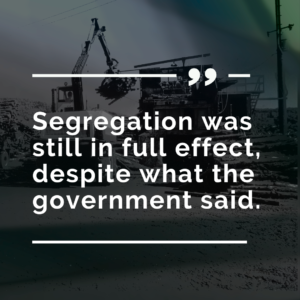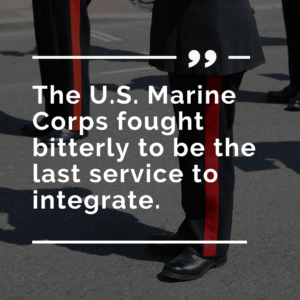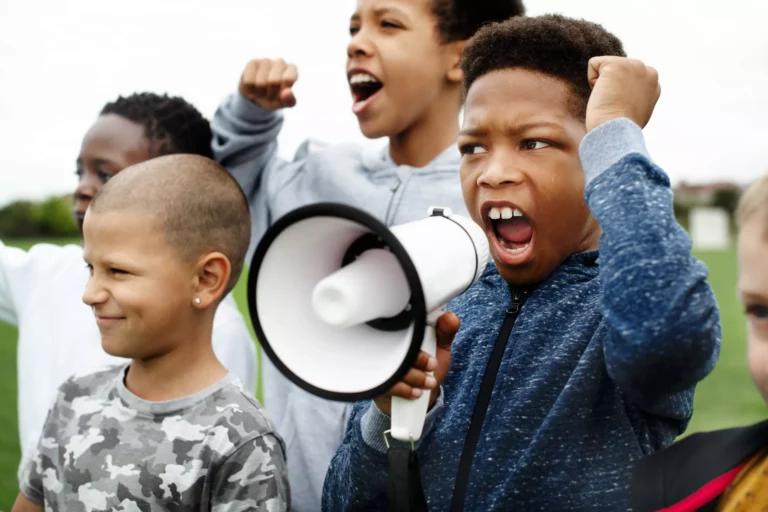White Flight & Early Experiences of Racism
My first memories of experiencing racism are from my early childhood. I was starting elementary school in Gary, Indiana. I remember the excitement of going to Washington Elementary for the first time and seeing so many other kids with different backgrounds and skin color. This wasn’t surprising. After all, Gary was a steel town dubbed as a “melting pot” of society. There were people from all walks of life drawn to the opportunities of steady employment and decent wages provided by the booming steel industry of the Midwest.
But by the time I was in second grade, nearly all the white kids were gone from our school. And every other school in Gary, for that matter. Back then, I wondered where my little friends had gone. Later in life, I learned this mass exodus was called “white flight”. That was my introduction to racism, or at least the first that I remember. It was the early 1960s.

Life Lessons From Inner-City Black America
As was the case across America, white parents fought mandated integration of schools by simply moving away. Segregation was still in full effect, despite what the government said. Even the “melting pot” couldn’t keep dissimilar elements together. I remember seeing all those kids again, but only once a year as we got older. Ironically, they would show up at the annual steel mill Christmas parties held in a huge auditorium. But otherwise, they were ghosts. With the “white flight”, I found myself growing up in inner-city Black America.
These were tough, tense times (or continued to be tough, tense times, I should say) for Blacks in this country. We were literally fighting for our rights to be free from oppression and have access to opportunity. I was fortunate to have parents who instilled in me an unwavering sense of self-worth. Little did I know just how valuable and necessary that would be as I became an adult and built a career for myself. I am forever grateful for their life lessons that have gotten me this far.
Dismantling Racism From Within
Prior to becoming a millwright, my dad had been a Sergeant in the Marine Corps. That may sound like a small feat, but this happened as the Korean War was coming to an end in the branch of U.S. military service that fought bitterly to be the very last to integrate. During that period, units in the Marine Corps were still mostly segregated.
The all-Black units were generally placed under the command of white officers, many of whom were ordered there as a form of punishment and/or admonition. Yet in the midst of that environment, my dad was able to make rank, lead, and train multiracial squads of men. My father demonstrated that Black men could indeed be leaders. Based on my own military experience decades later, I can truly appreciate how much effort that must have taken and how exceptional he had to be to overcome the overt racism of the times to accomplish what he did. Dad dismantled racism from within.

My father was not the only exceptional example of how to persevere in the face of racism. My mother attended Crispus Attucks High School in Indianapolis, Indiana through the years when an all-Black basketball team, including Oscar Robertson, won an Indiana High School State Championship for the first time ever. Crispus Attucks High School was a Ku Klux Klan experiment gone awry. It was the first and only all-Black high school in Indianapolis. In fact, at the time it was the only high school Black students were allowed to attend. In yet another attempt to evade school segregation, the Klan-led school board actually built Crispus Attucks not only to keep Black kids away from their white kids, but to also prove that Blacks weren’t capable of being educated.
The Klan egregiously underestimated the students and staff of Crispus Attucks High School. The school itself actually became a beacon of hope, a rallying point, and a pillar of the Black community. The school had more teachers with PhDs than any other school in the state. Distinguished alumni from Crispus Attucks High School include:
- Oscar Robertson, basketball legend;
- Major General Harry Brooks, the mentor to former Secretary of State Colin Powell;
- Wilma Moore Gibbs, local historian and archivist;
- Julia Carson, former Congresswoman;
- Wes Montgomery, jazz musician;
- Janet Langhart Cohen, journalist;
- Dr. Stanley Warren, Dean of Academic Affairs and Professor of Education at DePauw University, and;
- Frances Stout, Bethel AME Church historian and archivist.
Lesser-known graduates were my mother, and her brother, Stoney. The entire school community dismantled racism from within the constraints imposed upon them.
I give the most credit to my three family members — my mother, father, and uncle — for keeping me grounded with the understanding that I could be anything and do anything I set my mind to. My mother and father fought racism through their struggles growing up and sharing their knowledge with their children. My uncle took a different approach.

Uncle Stoney went on to become a project director at the Southern Christian Leadership Conference (SCLC). SCLC is a Black civil rights organization based in Atlanta, Georgia. Martin Luther King Jr. was the organization’s president then. I would relish hearing the stories of their work and the accomplishments made while Stoney worked there. Although I never got to meet Dr. King in person, his assassination certainly felt closer to home for our family. Occasionally, I got to meet and talk with other Black activists of the day.
One notable figure I met while in middle school was Harry Belafonte. Belafonte hosted my uncle’s wedding when he married Harry’s sister, Shirley. Stoney went on to become executive assistant to Andy Young when Young became the first Black ambassador to the United Nations in 1977. It was partly through this association that I received one of two Presidential appointments to the U.S. Naval Academy. I was surrounded by activists who were dismantling racist systems from within.
Breaking Barriers and Pushing Forward
In 1977, I left my all-Black community life in Gary and joined the incoming class of 35 Black young women and men from around the country at the predominantly white U.S. Naval Academy in Annapolis, Maryland. At the time, 97% of the Midshipmen enrolled were white, and our incoming class was merely the second to admit women. It was my turn to dismantle racism from within.
Just 210 years earlier, Annapolis served as a slave port where Kunte Kinte arrived as part of a cargo of slaves aboard the Lord Ligonier…
To be continued…
by Greg Pace, CFO/COO
Check out CT3 Education programs such as No-Nonsense Nurturer, Real Time Teacher Coaching, and Real Time Leadership Coaching to find out more about Professional Development for Teachers and Leaders, classroom management strategies, and building relationships with students and their families.
Category: Anti-Racism, Change, Education


